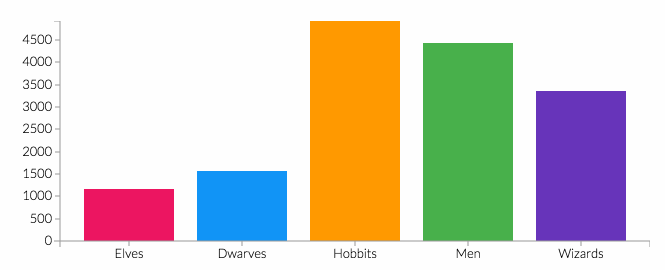PROGRAM PEMBIASAAN HARIAN DALAM MEMBENTUK KARAKTER SISWA DITINJAU DARI PERSPEKTIF PSIKOLOGI BELAJAR
DOI:
https://doi.org/10.33853/istighna.v3i1.186Abstract
This study aims to determine the program of daily habituation activities in shaping the character of students of SMP Negeri 6 Pekalongan City, looking for what characters are to be formed in each daily habituation activity program, and concepts in psychological learning theory in explaining the process of habituation activities in shaping student character. This research is included in the field research with a descriptive qualitative approach. The results of the study of daily habituation programs in SMP Negeri 6 Pekalongan City are scheduled and conditional, namely tadarus and prayers before KBM (religious and disciplinary), duha prayer (religious and responsibility), dzhuhur prayers (religious and responsibility), canteen honesty (honesty), orderly coming and going home (discipline and responsibility), orderly appearance (discipline and responsibility), respectful flags singing the national anthem, and folk songs (love of the motherland and national spirit), group class picket (care about the environment and responsibility), conditioning the cleanliness (care for the environment), separation of organic and non-organic waste (care for the environment and responsibility). From the daily habituation program can be explained psychological approach, especially with learning theories, including (1) changes in student behavior with habituation activities and carried out repeatedly will be a reinforcer in student behavior in addition to reward and punishment as a reminder process for students, (2 ) students' self-awareness in behaving because of changes in student behavior needs to be seen from the cognitive development of students. Some students are still in the level of concrete operations and most have entered the formal operational stage so students are able to think more mature and able to think logically and logically. In addition, changes in student behavior are formed due to the process of imitation and demonstration from teachers in particular, and friends at school in general. So the role of the teacher, the school environment and the cognitive abilities of students is an important key in shaping behavior.Downloads
References
Afifudin. 2012. Metodeologi Penelitian Kualitatif. Bandung: Pustaka Setia
Ayu, Agista Rizky Ridha, and I Made Suwanda. 2013. Pembentukan Karakter Siswa SMP Negeri 6 Mojokorto Melalui Kegiatan Upacara Bendera. Kajian Moral dan Kewarganegaraan, 1, no. 1
Berk, Laura E. 2012. Development Through The Lifespan. Yogyakarta: Pustaka Pelajar
Dalimunthe, Reza Armin Abdillah. 2015. Strategi Dan Implementasi Pelaksanaan Pendidikan Karakter Di SMP N 9 Yogyakarta. Jurnal Pendidikan Karakter 5, no. 1
Dalyono, M. 2007. Psikologi Pendidikan. Jakarta: Rineka Cipta
Fadhillah, Muhammad dan Lilif Mualifatu Khorida. 2013. Pendidikan Karakter Anak Usia Dini. Yogyakarta: Ar-Ruzz Media
Familus. 2016. Teori Belajar Aliran Behavioristik Serta Implikasinya Dalam Pembelajaran. Jurnal PPKn dan Hukum 11, no. 2
Frye, Mike. 2002. Character Education: Informational Handbook and Guide for Support and Implementation of the Student Citizent Act of 2001. North Carolina: Public Schools of North Carolina
Hergenhanhn, B.R. Dan Matthew H.Olson. 2010. Theories of Learning, Terj. Tri Wibowo. Jakarta : Prenada Media Group. Jakarta: Prenada Media Grup
Hijriati. 2016. Tahapan Perkembangan Kognitif Pada Masa Early Childhood. Bunayya: Jurnal Pendidikan Anak 1, no. 2
Lickona, Thomas. 1991. Educating for Character: How Our School Can Teach Respect and Responsibility. New York, Toronto, London, Sydney,. Aucland: Bantam books
Marzuki. 2012. Pendidikan Karakter Dan Pengintegrasiannya Dalam Pembelajaran. STAIN Kediri
Mitra, L. Diana, dan Steven Jay Gross. 2009. Increasing Student Voice in High School Reform: Building Partnerships, Improving Outcomes. Educational Management Administration & Leadership 37, no. 4
Okezone. 2016. SMP Unggulan Pekalongan Kebanjiran Calon Siswa. Berita, Accessed November 20, 2019. https://news.okezone.com/read/2016/06/21/65/1421510.
Ramdhani, Ali. 2014. Lingkungan Pendidikan Dalam Implementasi Pendidikan Dalam Implementasi Pendidikan Karakter. Jurnal Pendidikan UNIGA 8, no. 1
Rismayati, and Rolina. 2012. Pencarian Jati Diri Melalui Proses Belajar Dan Pengalaman. Yogyakarta: SPS UGM
Salahudin, Anas dan Irwanto Alkrienchie. 2013. Pendidikan Karakter: Pendidikan Berbasis Agama dan Budaya Bangsa. Bandung : Pustaka Setia
Santrock, Jhon W. 2009. Psikologi Pendidikan,. Translated by Diana Angelica. Jakarta: Salemba Humanika
Sanusi, Anwar. 2016. Metodologi Penelitian Bisnis. Jakarta: Salemba Empat
Slavin, Robert E. 2006. Psikologi Pendidikan: Teori Dan Praktik. Translated by Marianto Samosir. Jakarta: PT Indeks
Soekamto, Toeti, and Udin Saripudin Winaputra. 1997. Teori Belajar Dan Model-Model Pembelajaran. Jakarta: Dikti
Sujarweni, V. Wiratna. Sujarweni, V.Wiratna. 2014. Metodeologi Penelitian. Yogyakarta: Pustaka Baru Press
Suryono, and Haryanto. 2012. Belajar Dan Pembelajaran Teori Dan Konsep Dasar. Bandung: Remaja Rosdakarya
Taylor, L. 1993. Vygotskian Influences in Mathematics Education, with Particular Reference to Attitude Development. Focus on Learning Problems in Mathematics 15
Tirri, Kirsi, and Leila Pehkonen. 2002. The Moral Reasoning and Scientific Argumentation of Gifted Adolescents. Journal of Advanced Academics 13, no. 3
Tokuan, Yuliana Margaretha. 2016. Peran Guru Dalam Pembentukan Kepribadian Disiplin Siswa SMP Negeri 11 Kota Pontianak. Jurnal Pendidikan dan Pembelajaran Khatulistiwa 5, no. 1
Yuniati, Ani, Suyahmo, and Juhadi. 2017. Perilaku Menyimpang Dan Tindak Kekerasan Siswa SMP Di Kota Pekalongan. Journal of Educational Social Studies 6, no. 1
Yohanes, Rudi Santoso. 2010. Teori Vygotsky Dan Implikasi Terhadap Pembelajaran Matematika. Widya Warta 34, no. 2
Zulhammi. 2015. Teori Belajar Behavioristik Dan Humanistik Dalam Perspektif Pendidikan Islam. Jurnal Darul ‘Ilmi 3, no. 1
Downloads
Published
How to Cite
Issue
Section
License
Copyright Notice
Authors hold and retain copyright and grant the journal right of first publication with the work simultaneously licensed under a http://creativecommons.org/licenses/by-sa/4.0that allows others to share the work with an acknowledgment of the work's authorship and initial publication in this journal.

This work is licensed under a Creative Commons Attribution-ShareAlike 4.0 International License.
















